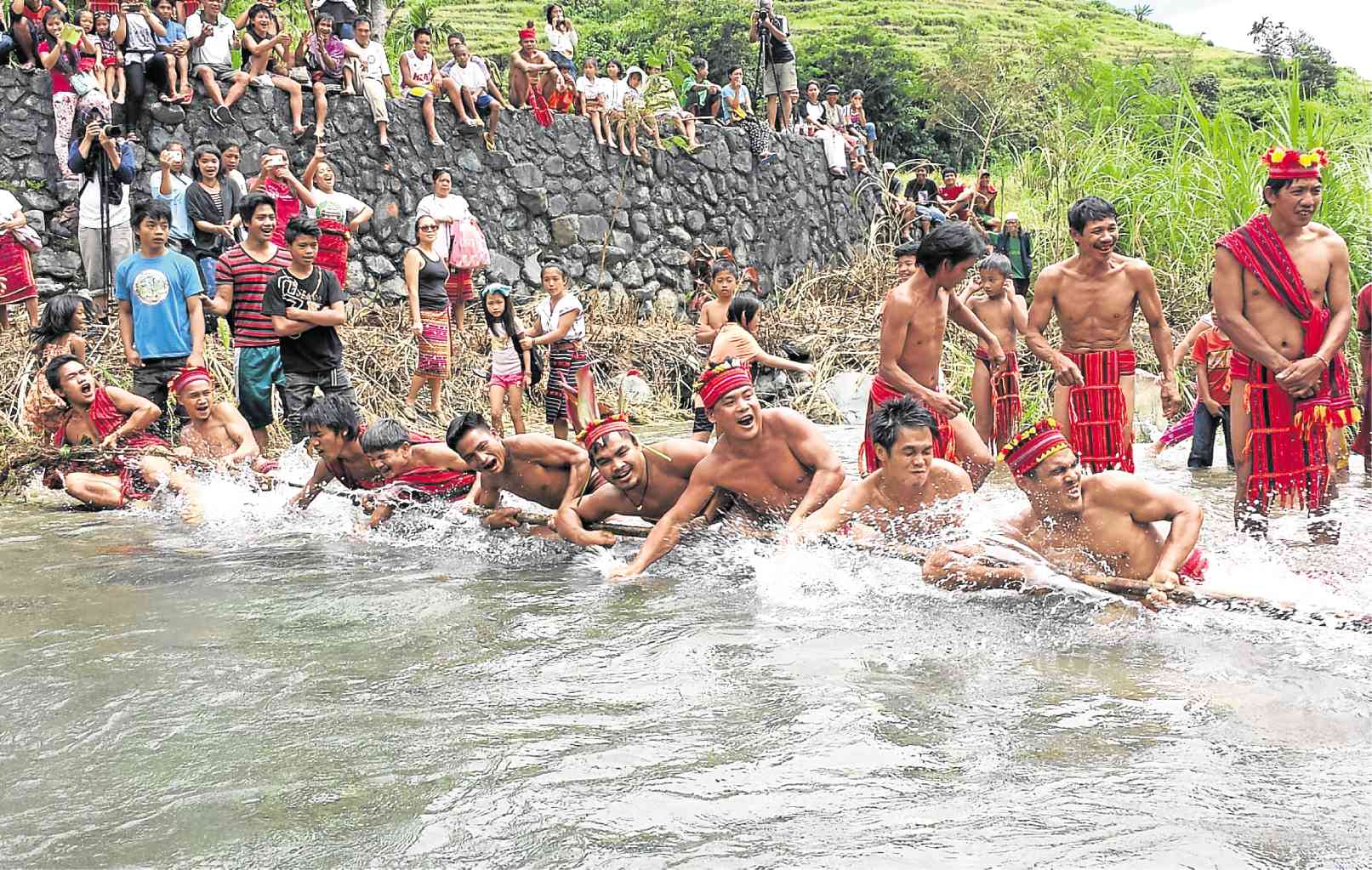
COMMUNITY GAMES The villages of Hapao, Baang and Nungulunan in Hungduan town in Ifugao province hold the post-harvest ritual “pun-nok” where teams of community members compete by pulling a rope made of sapling from an attoba tree at the Hapao River. Victory means their next harvest would be the most bountiful. EV ESPIRITU / INQUIRER NORTHERN LUZON
The ritual has been enshrined as an intangible cultural heritage by the United Nations Educational, Scientific and Cultural Organization (Unesco). Ifugao is also on the World Heritage List because of its rice terraces.
Villages from Hapao, Baang and Nungulunan in Hungduan perform the pun-nok, where groups of farmers compete by pulling a rope made of sapling from an Atoba tree at Hapao River.
To win, a group must pull the portion of the rope strapped with a carved figure to its side of the river. A win means the next harvest will “be the most bountiful of all the contenders,” according to a document detailing pun-nok’s inscription details.
“The post-harvest thanksgiving ritual … contributed to the strength, unity and sustainability of the indigenous agricultural system and community life of the Tuwali Ifugao,” said Virginia Miralao, secretary general of the Philippine National Commission for Unesco, in a speech read for her by filmmaker Kidlat Tahimik in Hungduan.
Tahimik had befriended elders Lopes Nauyac, Elena Uyami and Victor Melong, whom Miralao had credited for keeping the tradition alive.
Nauyac said the rituals and games are performed at the river because “bathing cleanses the villagers of past mistakes and bad luck.”
Miralao said the rituals and games “convey … indigenous knowledge and sacred wisdom that awaken in a people a sense of connection or belonging … to a universe much bigger than themselves.”
She said pun-nok was part of a multinational inscription, sharing the title with the tugging rituals performed in Cambodia, South Korea and Vietnam.
According to the Unesco, many tugging games “bear the traces of agricultural rituals, symbolizing the strength of natural forces, such as the sun and rain while also incorporating mythological elements or purification rites. Tugging rituals and games are often organized in front of a village’s communal house or shrine, preceded by commemorative rites to local protective deities.”
Miralao said the common rituals reveal the ties that bound together the rice farming cultures in east and southeast Asian countries. Vincent Cabreza, Inquirer Northern Luzon, with a report from EV Espiritu in Ifugao